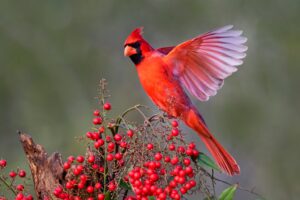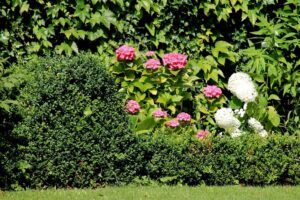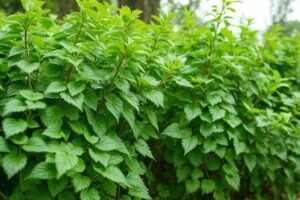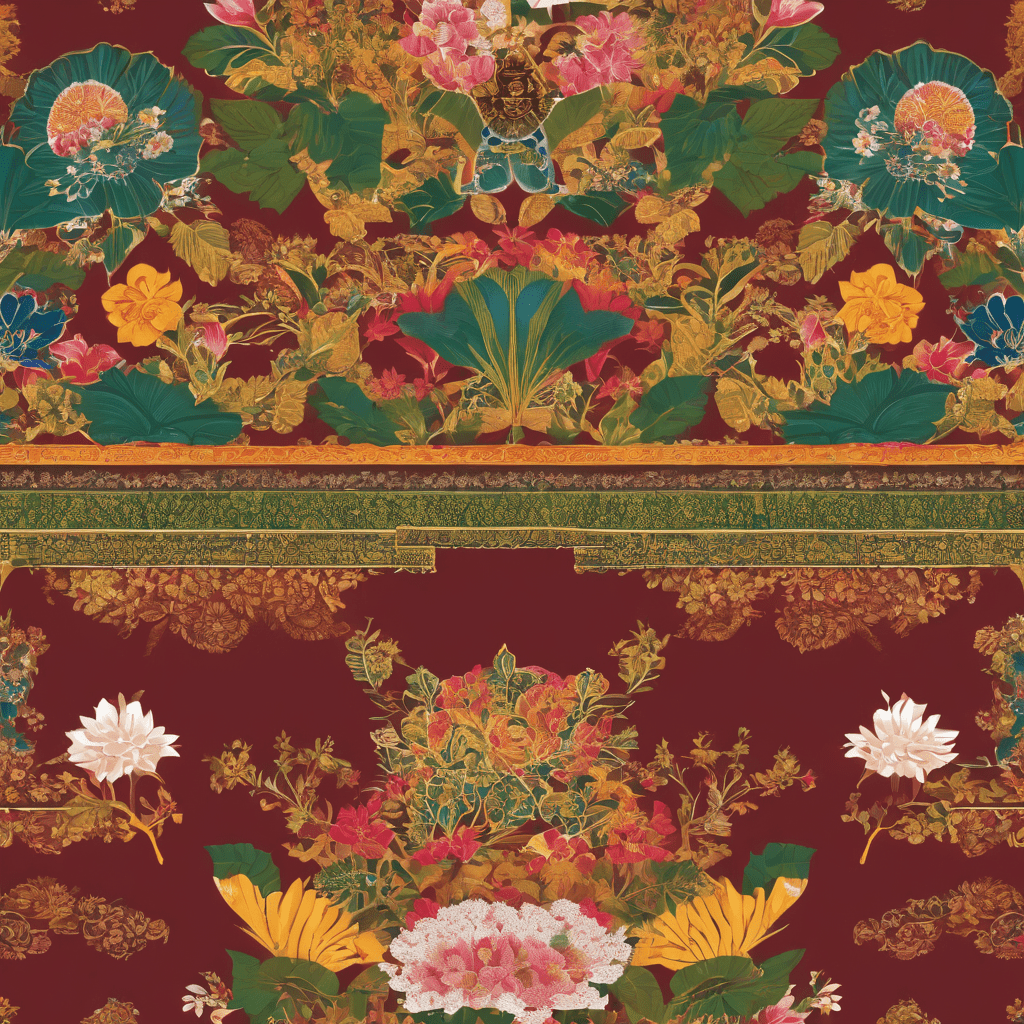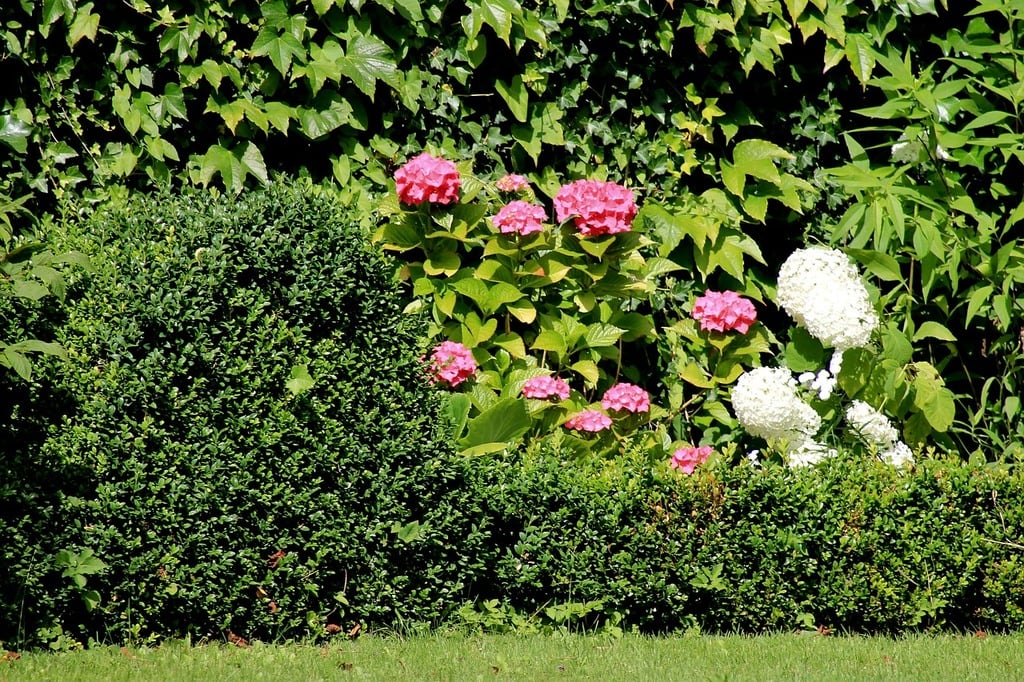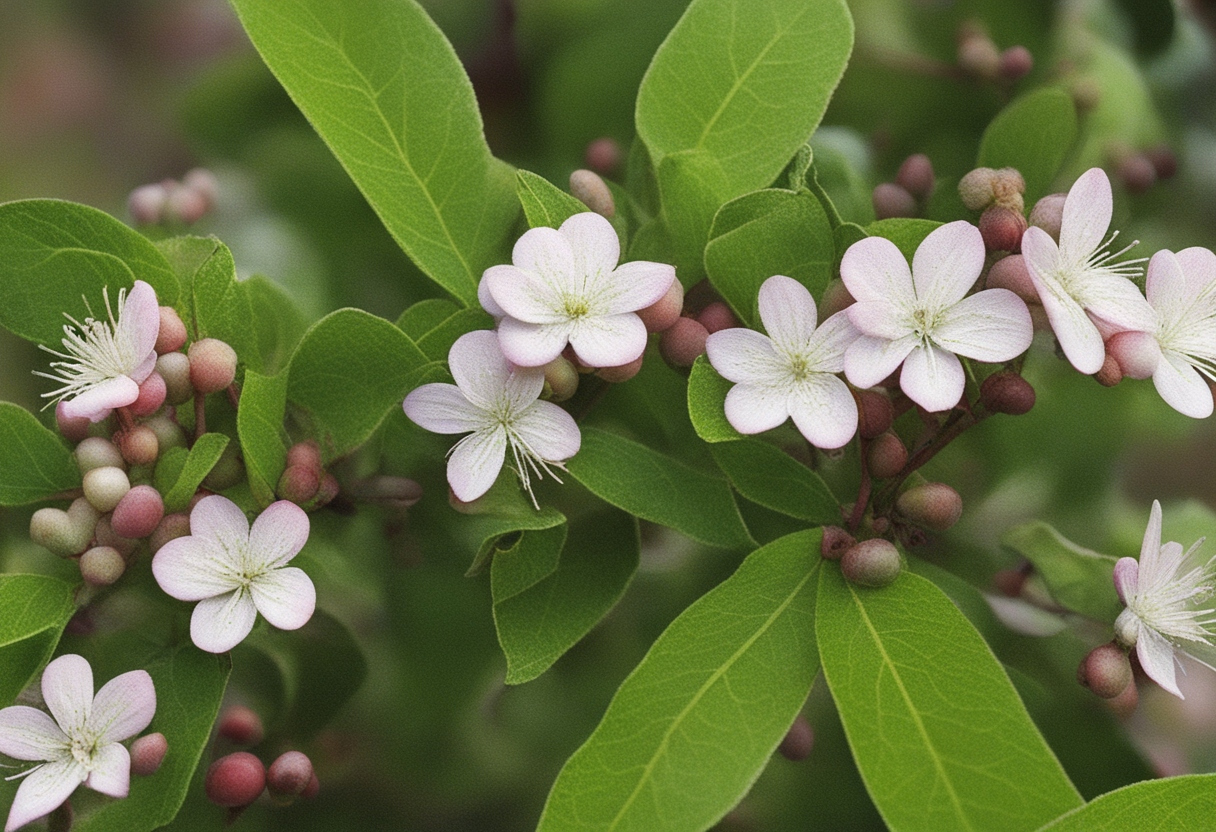Ancient Roots: Exploring the Origins of Shrub Symbolism in Cultural Traditions
The symbolism of shrubs in cultural traditions has deep roots that stretch back to ancient times. Across different civilizations and continents, shrubs have held significant meaning in various aspects of life, from religion to healing practices to artistic expressions.
In ancient Egyptian culture, for example, shrubs like the lotus were revered for their symbolic representation of rebirth and purity. The lotus flower, emerging from muddy waters yet blooming into a beautiful blossom, symbolized the journey of the soul and the cyclical nature of life. Similarly, in ancient Greece, the laurel shrub was associated with Apollo, the god of music, poetry, and prophecy. The laurel wreath became a symbol of honor and achievement, bestowed upon victorious athletes, scholars, and leaders.
As we delve into the origins of shrub symbolism in cultural traditions, we uncover a rich tapestry of beliefs and practices that highlights the significance of these humble plants. Understanding the historical context and cultural nuances surrounding the symbolism of shrubs provides a fascinating glimpse into the intricate threads that have woven together to shape our diverse human experience.
• Shrubs have held significant meaning in various aspects of life across different civilizations and continents.
• In ancient Egyptian culture, shrubs like the lotus symbolized rebirth and purity.
• The lotus flower represented the journey of the soul and the cyclical nature of life.
• Ancient Greece associated laurel shrubs with Apollo, the god of music, poetry, and prophecy.
• The laurel wreath became a symbol of honor and achievement in Greek society.
Sacred Significance: Unveiling the Spiritual and Religious Meanings Associated with Shrubs
Shrubs have long held a sacred significance in many spiritual and religious traditions across the globe. In ancient cultures, these humble plants were revered for their ability to connect the earthly realm with the divine. The lush green foliage and vibrant blossoms of shrubs were seen as symbols of life, renewal, and spiritual growth.
In some indigenous beliefs, shrubs were thought to be inhabited by spirits or deities, and were therefore considered sacred. These plants were often used in rituals and ceremonies as offerings or as a means to communicate with the divine. The act of tending to and nurturing shrubs was seen as a sacred duty, reflecting the belief in the interconnectedness of all living beings. Such religious and spiritual meanings associated with shrubs continue to influence cultural practices and beliefs today.
• Shrubs have been revered for their ability to connect the earthly realm with the divine in many ancient cultures.
• The lush green foliage and vibrant blossoms of shrubs symbolize life, renewal, and spiritual growth.
• In indigenous beliefs, shrubs were believed to be inhabited by spirits or deities, making them sacred.
• Shrubs were used in rituals and ceremonies as offerings or a means to communicate with the divine.
• Tending to and nurturing shrubs was seen as a sacred duty, reflecting the belief in interconnectedness of all living beings.
Botanical Legends: Fascinating Folklore and Mythology Surrounding Shrubs
Shrubs have played an intriguing role in folklore and mythology throughout history, captivating the imaginations of people across cultures. In Greek mythology, the laurel shrub was believed to be sacred to Apollo, the god of music and poetry. It was said that the laurel was originally a nymph named Daphne, who was transformed into a shrub to escape Apollo’s persistent pursuit. As a result, laurel wreaths became a symbol of victory and honor in ancient Greece.
In Celtic mythology, the hawthorn shrub held great significance and was associated with fairies and other supernatural beings. It was believed that these mystical creatures would retaliate if anyone dared to disturb or cut down a hawthorn tree. To this day, it is not uncommon to find hawthorn trees standing alone in fields, as people continue to respect the folklore surrounding them. Such botanical legends add depth and intrigue to the cultural fabric of societies across the globe.
• In Greek mythology, the laurel shrub was believed to be sacred to Apollo.
• The laurel shrub was originally a nymph named Daphne who transformed into a shrub to escape Apollo’s pursuit.
• Laurel wreaths became a symbol of victory and honor in ancient Greece.
• In Celtic mythology, the hawthorn shrub held great significance and was associated with fairies and supernatural beings.
• Disturbing or cutting down a hawthorn tree was believed to anger these mystical creatures.
• Hawthorn trees can still be found standing alone in fields as people respect the folklore surrounding them.
Healing Powers: Discovering the Medicinal Uses and Herbal Remedies of Shrubs in Different Cultures
Shrubs have long been utilized for their healing properties in various cultures around the world. The ancient Egyptians, for example, utilized the leaves of the myrtle shrub to treat digestive disorders, while the Native Americans of North America used the bark of the willow shrub as a natural pain reliever. In traditional Chinese medicine, shrubs such as ginseng and ginkgo have been valued for their rejuvenating and energizing effects. These medicinal uses of shrubs highlight the diverse knowledge and wisdom that different cultures possess in harnessing the healing powers of nature.
Throughout history, shrubs have also been used in herbal remedies to address a myriad of ailments. In India, the neem shrub is considered a panacea, with its leaves, seeds, and bark used in various preparations to treat skin conditions, dental issues, and even diabetes. Similarly, the European tradition of herbalism includes the use of shrubs like chamomile and lavender for their calming and soothing effects. The vast array of medicinal uses and herbal remedies associated with shrubs in different cultures demonstrate the enduring belief in the power of nature to promote health and well-being.
• The ancient Egyptians used the leaves of the myrtle shrub to treat digestive disorders.
• Native Americans of North America used the bark of the willow shrub as a natural pain reliever.
• Traditional Chinese medicine values shrubs like ginseng and ginkgo for their rejuvenating and energizing effects.
• In India, the neem shrub is considered a panacea, with its various parts used to treat skin conditions, dental issues, and diabetes.
• European herbalism includes the use of chamomile and lavender from shrubs for their calming and soothing effects.
Ritualistic Practices: How Shrubs Have Been Used in Ceremonies and Celebrations Throughout History
Shrubs have held a significant role in various rituals and celebrations throughout history, spanning across different cultures. These leafy plants have been used in ceremonial practices, symbolizing purification, protection, and spiritual connection. In ancient Greece, for example, shrubs such as laurel were often incorporated into religious ceremonies to honor the gods and bring blessings. The aromatic properties of shrubs were believed to evoke a sense of divine presence and enhance the spiritual experience.
In many indigenous cultures, shrubs have played a central role in rituals celebrating the cycles of nature and the relationship between humans and the natural world. For instance, the burning of sacred herbs, such as sage and cedar, has been a common practice among Native American tribes to cleanse the energy and create a sacred space during ceremonies. The smoke is believed to carry prayers and intentions to the heavens, while the scent of the herbs is considered purifying and healing.
• Shrubs like laurel were used in ancient Greek religious ceremonies to honor gods and bring blessings
• Aromatic properties of shrubs were believed to enhance the spiritual experience
• Indigenous cultures use shrubs in rituals celebrating nature and the relationship between humans and the natural world
• Burning sacred herbs like sage and cedar cleanses energy and creates a sacred space during Native American ceremonies
• Smoke from burning herbs carries prayers and intentions to the heavens
• Scent of herbs is considered purifying and healing
Aromatic Allure: Exploring the Fragrant Qualities and Perfume Making with Shrubs in Various Cultures
Shrubs, with their aromatic qualities, have long been utilized in the art of perfumery across cultures. The fragrant essence of shrubs has played a significant role in creating captivating scents that have been admired and coveted throughout history. In various cultures, the extraction of essential oils from shrubs has been a cherished tradition, with each region offering its unique blend of fragrant species.
In ancient Egypt, for example, shrubs such as rosemary and lavender were esteemed for their aromatic properties and used in the creation of perfumes. These scents were associated with purification rituals and the worship of deities. Similarly, in India, sandalwood and jasmine were highly valued for their enticing fragrances, which were believed to have the power to evoke spiritual enlightenment and awaken the senses. Perfume making with shrubs has been a cultural art form, weaving a tapestry of scents that not only delighted the olfactory senses but also held symbolic significance in various societies.
• In ancient Egypt, rosemary and lavender were used for their aromatic properties in perfumes
• These scents were associated with purification rituals and worship of deities
• Sandalwood and jasmine were highly valued in India for their enticing fragrances
• They were believed to have the power to evoke spiritual enlightenment and awaken the senses
Decorative Delights: The Role of Shrubs in Ornamental Gardening and Landscape Design across Cultures
Shrubs have long played a significant role in ornamental gardening and landscape design across various cultures. Their lush foliage, colorful flowers, and unique shapes make them ideal for creating visually appealing outdoor spaces. In many cultures, shrubs are strategically placed to enhance the overall aesthetics of a garden or landscape. Whether used as borders, hedges, or focal points, shrubs add depth, texture, and structure to outdoor environments.
One of the key advantages of incorporating shrubs into ornamental gardening and landscape design is their versatility. Shrubs come in a wide range of sizes, forms, and colors, allowing designers to choose plants that complement the overall theme and style of a garden. From formal gardens with neatly trimmed boxwood hedges to wild and natural landscapes with flowering shrubs, the possibilities are endless. In addition, shrubs are often chosen for their ability to endure different climates and growing conditions, making them ideal choices for creating visually stunning gardens and landscapes across diverse regions.
• Shrubs offer lush foliage, colorful flowers, and unique shapes that enhance the visual appeal of outdoor spaces
• They can be strategically placed as borders, hedges, or focal points to add depth, texture, and structure to gardens and landscapes
• The versatility of shrubs allows designers to choose plants that complement the overall theme and style of a garden
• They come in various sizes, forms, and colors, offering endless possibilities for ornamental gardening and landscape design
• Shrubs are resilient and can withstand different climates and growing conditions, making them suitable for diverse regions.
Symbolic Signposts: Examining the Meaning of Shrubs in Art, Literature, and Symbolism
Shrubs have long played a significant role in art, literature, and symbolism, serving as powerful signposts of deeper meanings and representations. In art, shrubs are often depicted to convey a sense of tranquility, harmony, or even mystery, depending on the context of the work. Paintings, sculptures, and other visual mediums often use shrubs in landscapes to evoke a particular mood or to enhance the overall composition. From serene garden scenes to wild, untamed forests, shrubs can be found in various artistic expressions throughout history.
In literature, shrubs are used as symbolic elements to enrich the narrative and add layers of meaning. They can represent growth, renewal, or fertility, as well as concealment, secrecy, or mystery. Writers employ shrub imagery to create vivid descriptions of landscapes, set the stage for a particular scene, or even mirror the inner emotional landscapes of characters. Through the use of shrubs, authors are able to evoke a sense of place and deepen the reader’s understanding of the story’s thematic elements.
• In art, shrubs are often used to convey tranquility, harmony, or mystery
• Shrubs can be found in various artistic expressions throughout history
• They enhance the overall composition and evoke a particular mood in paintings, sculptures, and other visual mediums
• In literature, shrubs serve as symbolic elements that enrich the narrative
• They represent growth, renewal, fertility as well as concealment, secrecy or mystery
• Shrub imagery creates vivid descriptions of landscapes and sets the stage for scenes
• Authors use shrub symbolism to mirror characters’ emotional landscapes
• The use of shrubs deepens readers’ understanding of thematic elements
• It evokes a sense of place within the story
Cultural Significance: Shrubs as Representations of Identity, Beliefs, and Traditions in Different Societies
In cultures around the world, shrubs hold a significant role in representing identity, beliefs, and traditions. These woody plants are often deeply intertwined with the cultural fabric of societies, serving as symbols of a community’s connection to the land and its history. Shrubs can be found in various forms, from native species that have been cherished for generations to meticulously cultivated ornamental plants that reflect the artistic sensibilities of a society. The cultivation and use of shrubs in different cultural contexts reveal the diverse ways in which these plants have been embraced as embodiments of cultural values and beliefs.
One fascinating aspect of the cultural significance of shrubs is their connection to spiritual and religious practices. Many societies believe that shrubs possess sacred qualities and are conduits for divine blessings or protection. In some cultures, shrubs are revered as symbols of luck, prosperity, or spiritual enlightenment. Rituals, ceremonies, and festivals often incorporate the presence of certain shrubs, further emphasizing their importance in these cultural contexts. The symbolic use of shrubs in religious and spiritual practices provides insight into how these plants are regarded as channels for spiritual connection and expressions of deep-seated beliefs in different societies.
• Shrubs are deeply intertwined with the cultural fabric of societies around the world.
• They serve as symbols of a community’s connection to the land and its history.
• Shrubs can be found in various forms, from native species to ornamental plants reflecting artistic sensibilities.
• Cultivation and use of shrubs reveal diverse ways they embody cultural values and beliefs.
One fascinating aspect of shrubs’ cultural significance is their connection to spiritual and religious practices.
• Many societies believe shrubs possess sacred qualities and act as conduits for divine blessings or protection.
• Some cultures revere certain shrubs as symbols of luck, prosperity, or spiritual enlightenment.
• Rituals, ceremonies, and festivals often incorporate specific shrub presence, emphasizing their importance.
The symbolic use of shrubs in religious and spiritual practices provides insight into:
• How these plants are regarded as channels for spiritual connections
• Expressions of deep-seated beliefs in different societies
Contemporary Perspectives: How the Symbolism and Use of Shrubs in Cultural Traditions Continue to Evolve Today
In today’s rapidly changing world, the symbolism and use of shrubs in cultural traditions continue to evolve. As societies become more diverse and interconnected, the significance attached to shrubs takes on new meanings and interpretations. With globalization and the spread of information, traditional cultural practices involving shrubs are being shared and adopted by different communities around the globe.
One notable aspect of the evolving perspectives on shrub symbolism is the growing awareness of environmental conservation and sustainability. As individuals and communities become more conscious of the impact humans have on the natural world, there is a renewed appreciation for the role of shrubs in maintaining ecological balance. Shrubs are now seen not only as symbols of cultural identity and tradition but also as important contributors to a healthy and sustainable environment. Efforts are being made to incorporate shrubs into urban landscapes, creating green spaces that promote biodiversity and improve air quality. Additionally, there is a revival of traditional knowledge about the medicinal and healing properties of certain shrubs, leading to an increased interest in natural remedies and herbal medicine. These contemporary perspectives reflect a recognition of the interconnectedness between humans and nature and highlight the importance of preserving and nurturing our natural resources.
• The growing awareness of environmental conservation and sustainability has led to a renewed appreciation for the role of shrubs in maintaining ecological balance.
• Shrubs are now seen as important contributors to a healthy and sustainable environment, beyond their symbolic value in cultural traditions.
• Efforts are being made to incorporate shrubs into urban landscapes, creating green spaces that promote biodiversity and improve air quality.
• Revival of traditional knowledge about the medicinal and healing properties of certain shrubs has sparked an increased interest in natural remedies and herbal medicine.
• These contemporary perspectives highlight the interconnectedness between humans and nature, emphasizing the importance of preserving and nurturing our natural resources.




